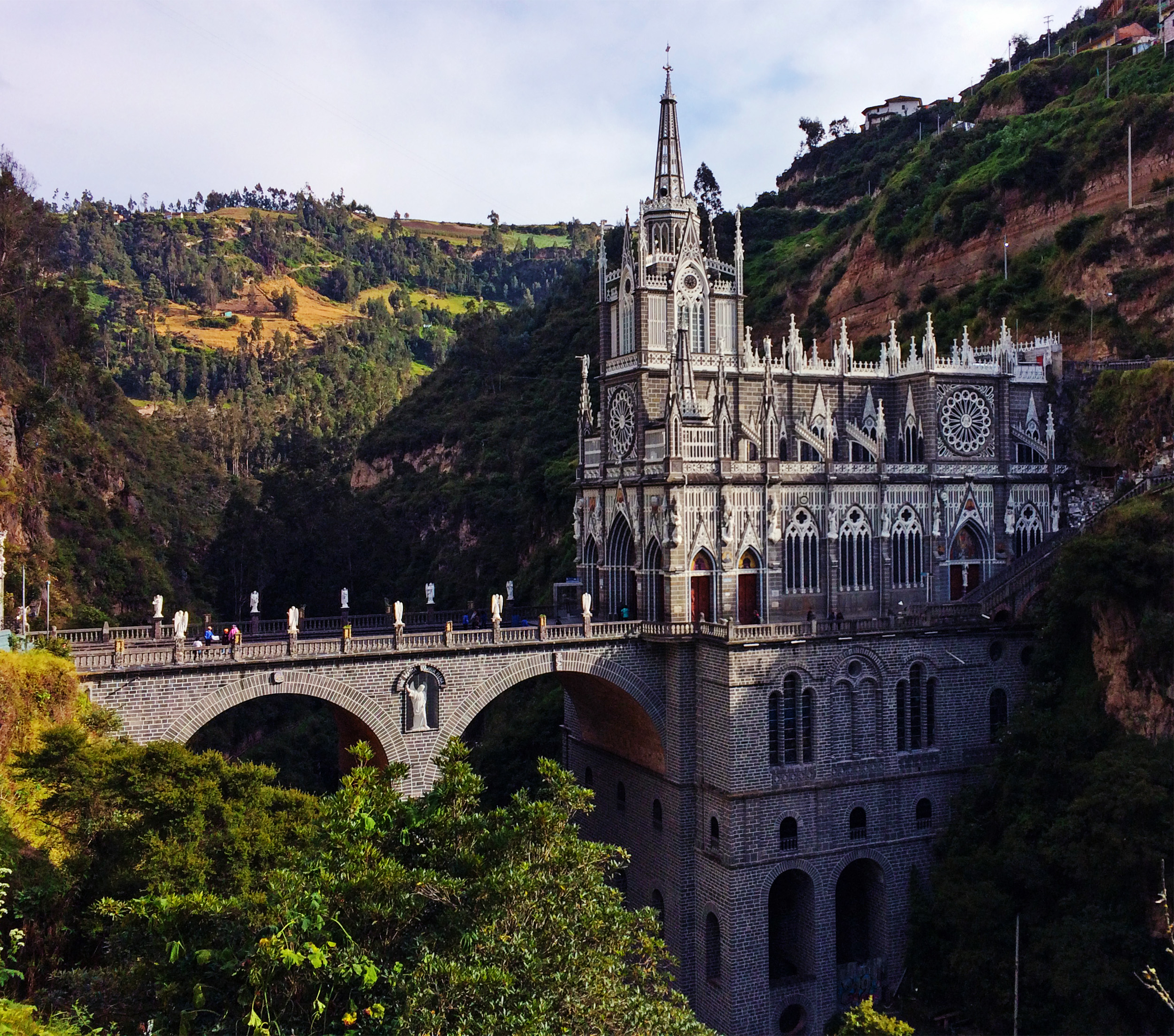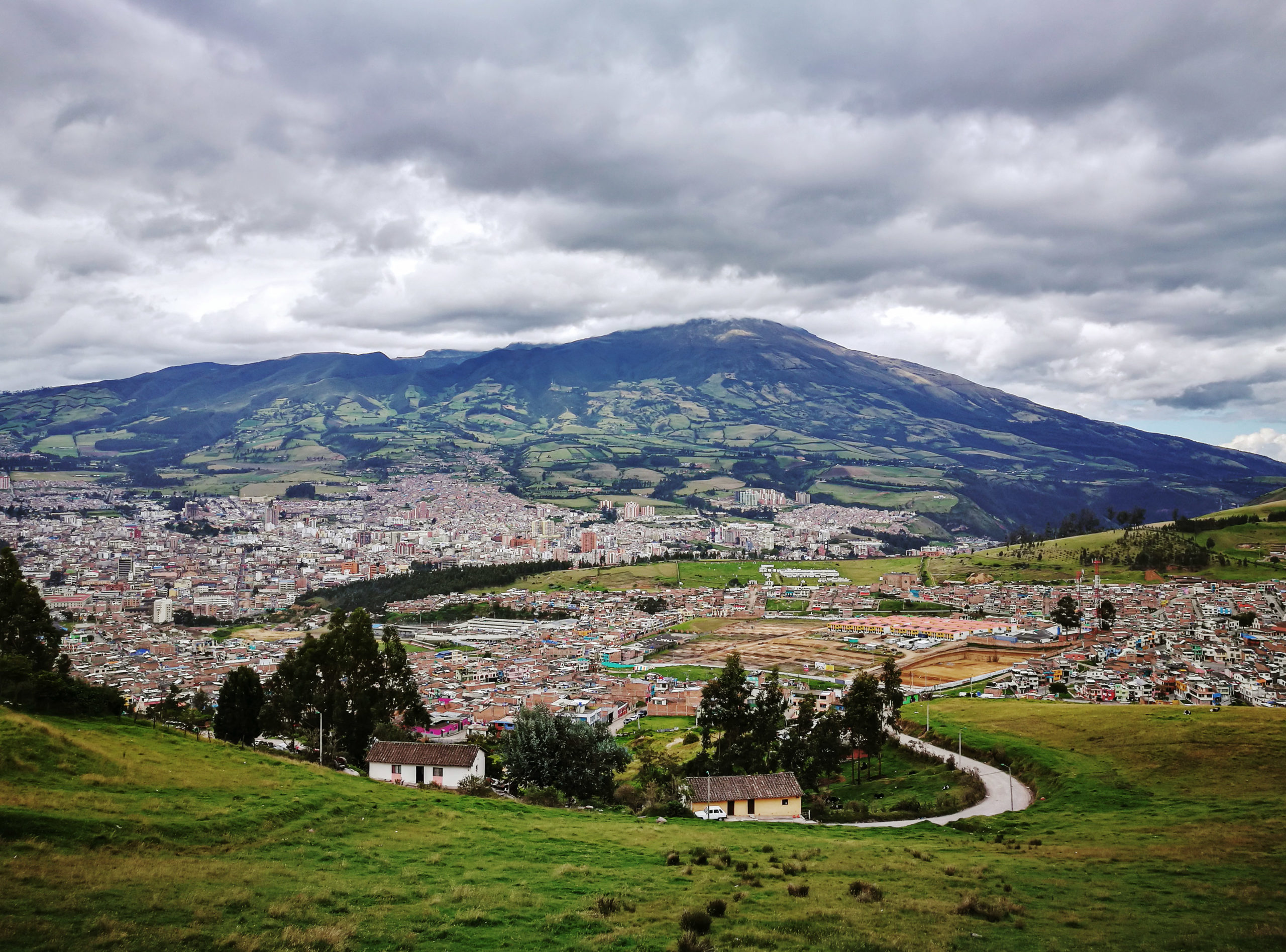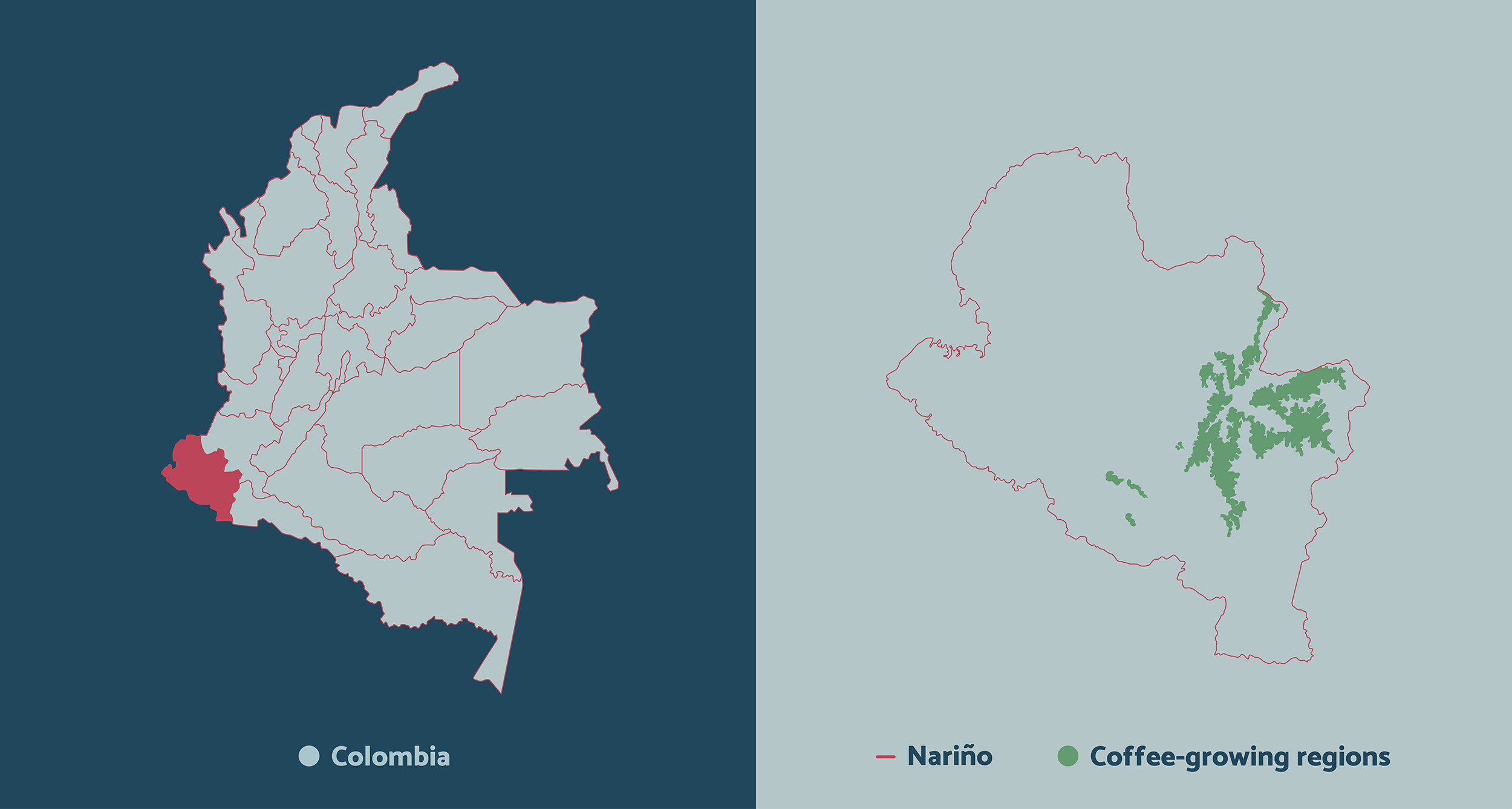Harvest: May–September
Elevation: 1,300–2,300 metres (4,300–7,500 feet) above sea level
Rainfall: 1,300–2,400 millimetres (51–94 inches)
Temperature: 17°C–23°C (63°F–73°F)
Nariño, together with Huila, is emblematic of a great shift in Colombian coffee production away from the Eje Cafetero and towards the southwest. Over the past 30 years, Nariño has gone from being virtually unknown among specialty coffee buyers to being the region with perhaps the best reputation for quality coffee in all of Colombia.
Nariño was the first region within Colombia to be awarded its own Denomination of Origin (DO), in 2011 (Superintendency of Industry and Commerce 2022) and, together with Huila, Nariño regularly dominates the Colombian Cup of Excellence (Cup of Excellence 2020).
Despite Nariño’s importance to the specialty coffee industry, its production remains relatively small compared with that of other major coffee-producing departments. Nariño produces around 600,000 bags per year — about one-fifth as much as Huila (AGRONET 2022).
 The Las Lajas shrine, built into the side of a steep-walled river valley in the southwest of Nariño
The Las Lajas shrine, built into the side of a steep-walled river valley in the southwest of Nariño
Nariño’s rise to prominence came at least partly as a result of its geography. Nariño lies in the far southwest of Colombia, on the border with Ecuador. In this close proximity to the equator, the sunlight is adequate for coffee-growing at the high elevations found in Nariño’s mountainous terrain. Approximately half of Nariño’s coffee farms are situated at more than 1,800 metres (5,900 feet) above sea level (Bacca et al 2021), and some of Nariño’s coffee farms are among the highest in the world.
The fertile, volcanic soils in Nariño’s mountains, together with the cool temperatures and ample sunlight at high altitudes, ensure that coffees from Nariño develop remarkable acidity, sweetness, and complex flavours.
 The active volcano Galeras looms over the town of Pasto, in the heart of Nariño’s coffee lands.
The active volcano Galeras looms over the town of Pasto, in the heart of Nariño’s coffee lands.
